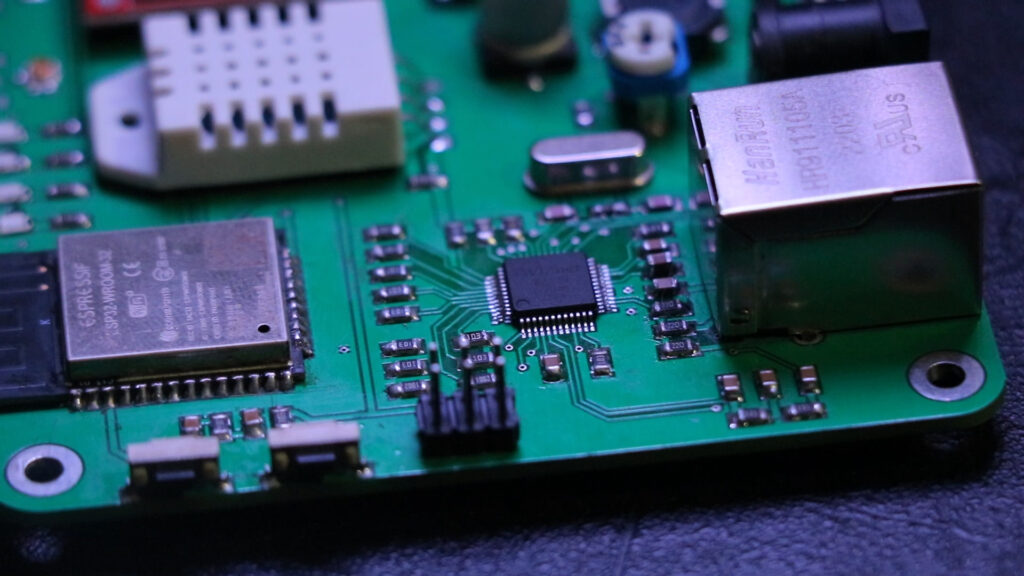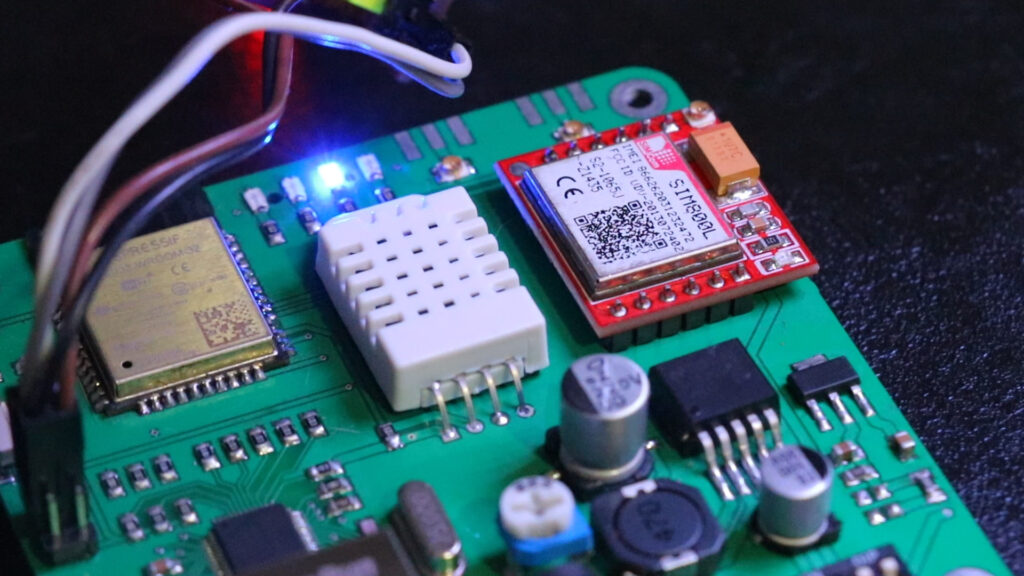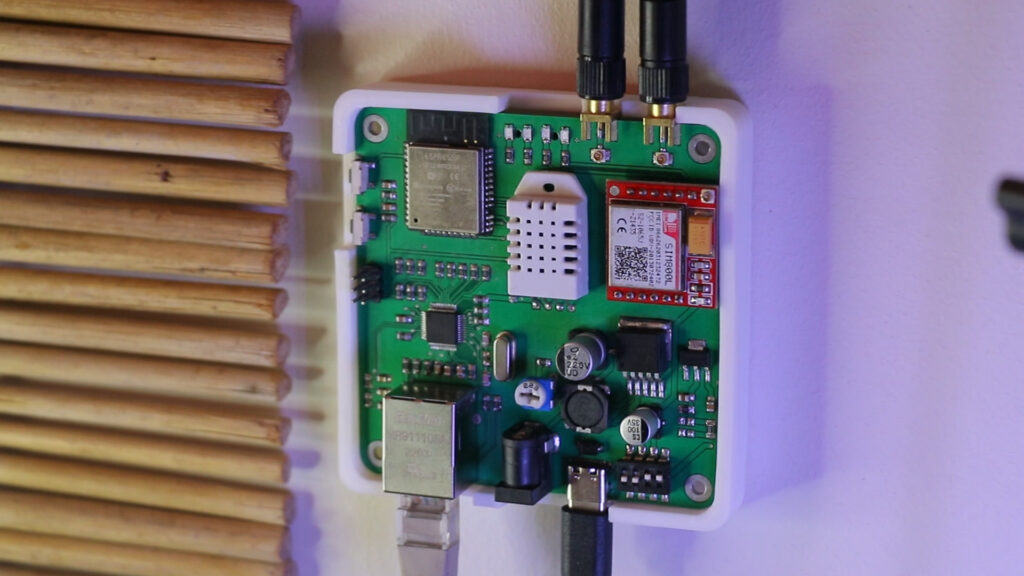![]() Features & Components
Features & Components
- Implementation of a W5500 chip for Ethernet connectivity, enabling easier internet connection.
- Utilization of LM1117 and LM2576 components for efficient power supply management.
- Integration of the ESP32 Wroom microcontroller for reliable performance and versatility.
- Integration of the DHT22 sensor for accurate temperature and humidity monitoring.

![藺]() Getting Started
Getting Started
To begin your TEMPO project, gather the necessary components including LM1117, LM2576, dip switch, W5500 chip, ESP32 Wroom microcontroller, reset and flash buttons, SIM800L cellular module, DHT22 sensor, and antennas.

The W5500 chip is a critical component in the TEMPO Edge Device, providing Ethernet connectivity that enables seamless internet connection for embedded systems. Here's a deeper dive into its functionality and importance within the project:
- Hardware Integration: The W5500 chip is specifically designed as a hardwired TCP/IP embedded Ethernet controller. It's engineered to seamlessly integrate into embedded systems, offering a straightforward solution for establishing Ethernet connectivity.
- SPI Interface: The W5500 communicates with the microcontroller, in this case, the ESP32 Wroom, via the Serial Peripheral Interface (SPI). This interface allows for high-speed communication between the microcontroller and the Ethernet controller, ensuring efficient data exchange.
- Internet Connectivity: With the W5500 chip onboard, the TEMPO Edge Device gains the ability to connect to local networks and the internet. This connectivity is essential for transmitting data collected by sensors to external servers or cloud platforms for analysis and storage.
![]() Schematic
Schematic
The schematic for TEMPO consists of multiple components responsible for power supply management, Ethernet connectivity, microcontroller functionality, cellular connectivity, and sensor integration.

![]() Usage
Usage
Once TEMPO is assembled and configured, it can be used to collect and process data from sensors, establish internet connectivity via Ethernet or cellular networks, and transmit data to remote servers for analysis and monitoring.

Code & PCB
If you’re interested in building this project on your own, the code is available on GitHub. Simply go to the GitHub repository, and download the code.
GitHub repository: github.com/cifertech/tempo
![]() Special Thanks to Our Sponsor: JLCPCB
Special Thanks to Our Sponsor: JLCPCB
No project is complete without the right tools and materials. That’s where our sponsor, JLCPCB, stepped in to provide essential support for this project. JLCPCB is a leading provider of high-quality printed circuit boards (PCBs) and PCB assembly services.
Simply head over to jlcpcb.com, upload your PCB design files, select your preferences, and Your custom PCBs are on their way to you in no time.

if you sign up using the link in the description below, you'll receive a $60 new user coupon.
Website: JLCPCB Official Website
![]() Conclusion
Conclusion
This project is just the beginning, with plenty more to explore and discover. Stay tuned for future updates and videos as we continue to enhance and expand TEMPO's capabilities. Let me know in the comments if you're excited about this project.
 CiferTech
CiferTech Features & Components
Features & Components Getting Started
Getting Started Schematic
Schematic Usage
Usage Special Thanks to Our Sponsor: JLCPCB
Special Thanks to Our Sponsor: JLCPCB Conclusion
Conclusion
 Slaven Damjanovic
Slaven Damjanovic
 eliiot-technology.ch
eliiot-technology.ch
 Ivo Slanina
Ivo Slanina
 Roman V
Roman V